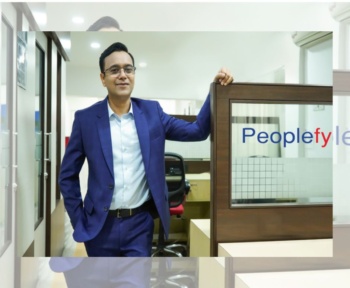As HR leaders increasingly adopt emerging technologies to address mounting workloads and better align with business strategies, a significant challenge has surfaced: HR software sprawl. This unchecked proliferation of software solutions generates waste, diminishes returns on technology investments, and negatively impacts the employee experience.
Understanding the Root Causes of Software Sprawl :
Overlapping Tools and Poor Governance
Ineffective purchasing decisions and mismanagement of existing technologies often lead to excess SaaS (software-as-a-service) licenses, redundancies, and data security vulnerabilities. For instance, legacy platforms may remain active even after new technologies are introduced, causing integration issues and wasted resources. Furthermore, organizations miss out on the benefits of innovative software features that remain unused due to limited adoption.
Unchecked Technology Debt
Mark Stelzner, founder and managing principal of IA, an Atlanta-based HR advisory firm, refers to this accumulation of underutilized technology as “technology debt.” Left unaddressed, it acts as a significant barrier to achieving HR goals and realizing productivity gains from breakthroughs like generative AI.
A 2023 study by SaaS intelligence platform Productiv revealed that 53% of SaaS licenses go unused, leading to substantial waste. Stelzner recalls a case where, over seven years, an organization failed to use half of its purchased software licenses.
The problem is often compounded by vendors incentivizing HR leaders to buy bundled modules rather than individual features, tempting organizations to acquire licenses before they are operationally ready. Adding to this is the allure of “shiny new technology” and fear of missing out (FOMO) on emerging trends, further driving unnecessary acquisitions. According to the Productiv study, large organizations now average 371 SaaS applications—a 32% increase since 2021.
Governance: The Critical Missing Link
Stacia Garr, co-founder of RedThread Research, notes that flawed governance exacerbates software sprawl. Uncoordinated acquisitions—often referred to as shadow systems—add to the proliferation of redundant technologies. However, strict centralization of technology purchasing can hinder innovation. Garr recommends a two-track governance approach:
- Decentralized Pilots: Allow experimentation with emerging tools.
- Centrally Managed Systems: Align major, proven investments with strategic goals.
AI technologies also introduce governance challenges. Shadow usage of tools like ChatGPT and Bard can create risks, including the introduction of bias in recruiting or performance management. A Fishbowl study found that 70% of employees using ChatGPT at work had not informed their managers.
Some vendors are addressing this through tools like ActivTrak, which can detect and classify AI usage to improve visibility, mitigate risks, and track employee AI adoption patterns.
Flawed Buying Decisions and Missed Opportunities
A Gartner study of 500 HR leaders found that 83% regretted a recent HR technology purchase, a reflection of poor alignment between technology investments and strategic needs. Gartner’s research shows that many HR departments acquire technology based on peer trends rather than solving specific organizational challenges.
Unfocused technology strategies lead to fragmented systems that detract from the employee experience and deliver limited business value. For example, overlay solutions from vendors like Applaud and Skuid provide modern interfaces that integrate fragmented systems, reducing inefficiencies without entirely replacing legacy platforms.
HR’s lack of contract awareness also plays a role. Stelzner cites situations where HR teams, unaware of contract renewal terms, find themselves stuck with unnecessary SaaS solutions due to auto-renewal clauses.
A Path Forward: Clarify Roles, Prioritize Accountability
Effective management of HR technologies requires well-defined roles and responsibilities. Organizations must designate accountable parties for system testing, integration, vendor monitoring, and change management. A structured approach to evaluating the impact of technology investments is also vital.
“Organizations often fail to assess whether their technology investments achieve their intended objectives,” Stelzner warns. “This damages HR’s credibility and wastes precious capital.”
Rethinking HR Technology for Maximum Impact
To avoid software sprawl and unlock the full potential of technology investments, HR leaders must prioritize:
- Strategic Alignment: Link technology purchases to critical business and talent outcomes.
- Thoughtful Governance: Balance experimentation with centralized oversight to reduce redundancies.
- Security Consciousness: Implement zero-trust strategies to safeguard sensitive data.
- Vendor Management: Understand contract terms to avoid long-term inefficiencies.
By adopting a disciplined approach to technology management, HR can optimize its systems, streamline operations, and improve the employee experience.



